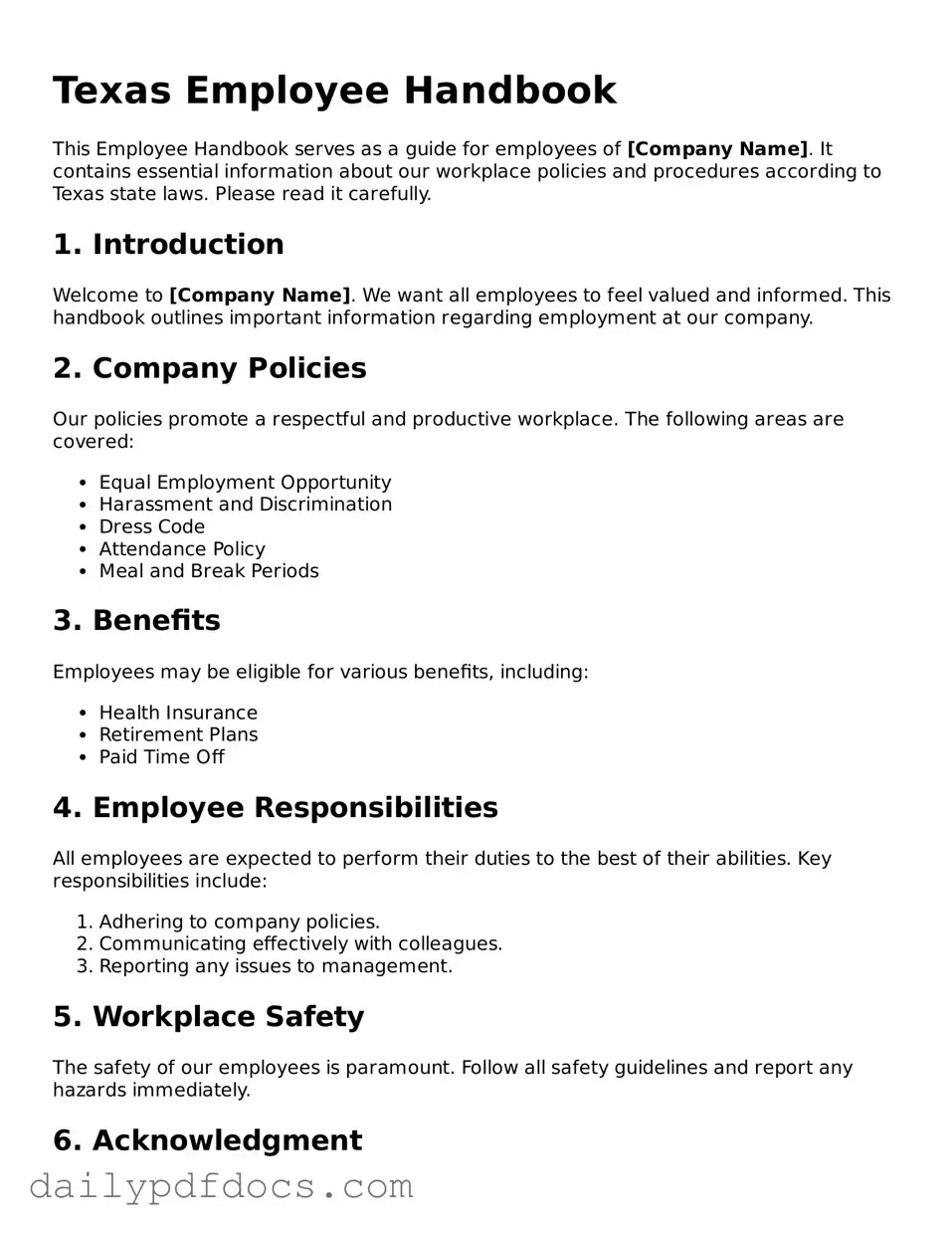What is the Texas Employee Handbook form?
The Texas Employee Handbook form is a document that outlines the policies, procedures, and expectations of an employer for their employees. It serves as a guide to help employees understand their rights, responsibilities, and the workplace culture. This handbook is essential for maintaining a clear understanding between employers and employees regarding workplace rules and regulations.
Why is an Employee Handbook important in Texas?
An Employee Handbook is crucial for Texas employers as it helps establish a clear set of guidelines for workplace behavior and policies. It can protect the company from potential legal disputes by ensuring that employees are aware of their rights and obligations. Additionally, a well-crafted handbook can enhance employee morale and productivity by creating a structured work environment.
What should be included in the Texas Employee Handbook?
Essential elements of a Texas Employee Handbook typically include company policies on attendance, dress code, harassment, discrimination, and disciplinary procedures. It may also cover benefits, leave policies, and safety regulations. Including a section on at-will employment is important, as Texas is an at-will employment state, meaning that either party can terminate employment at any time without cause.
Is it mandatory to provide an Employee Handbook to employees in Texas?
While Texas law does not mandate employers to provide an Employee Handbook, it is highly recommended. Having a handbook can help clarify policies and expectations, reducing misunderstandings. It also serves as a reference for employees, which can be beneficial in maintaining a positive workplace environment.
How often should the Employee Handbook be updated?
Employers should review and update the Employee Handbook regularly, ideally once a year or whenever there are significant changes in company policies or relevant laws. Keeping the handbook current ensures that employees have access to the most accurate information regarding their rights and responsibilities.
Can an Employee Handbook be used in legal disputes?
Yes, an Employee Handbook can be used in legal disputes. If an employee claims that their rights have been violated, the handbook can serve as evidence of the company's policies and procedures. However, it is crucial that the handbook is well-written and accurately reflects the company's practices to be effective in such situations.
What are the consequences of not having an Employee Handbook?
Not having an Employee Handbook can lead to confusion among employees regarding workplace policies and expectations. This lack of clarity can result in inconsistent practices and potential legal issues. Employers may find it more challenging to defend against claims of unfair treatment or discrimination without a documented set of policies.
How can employers ensure that employees understand the Employee Handbook?
To ensure that employees understand the Employee Handbook, employers should provide training sessions or meetings to discuss its contents. Additionally, requiring employees to sign an acknowledgment form after they have read the handbook can help reinforce their understanding. Employers should also encourage employees to ask questions if they need clarification on any policies.
